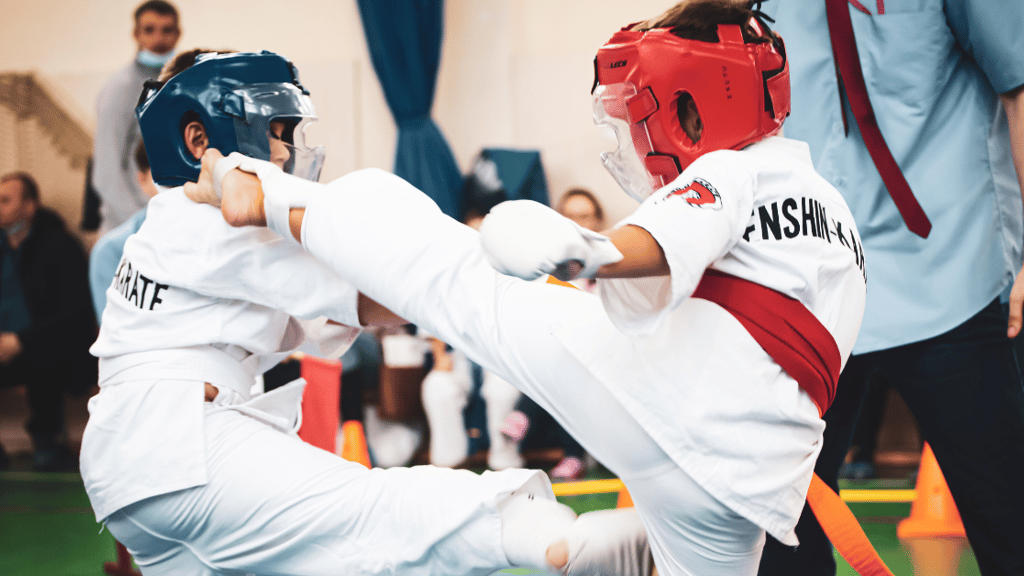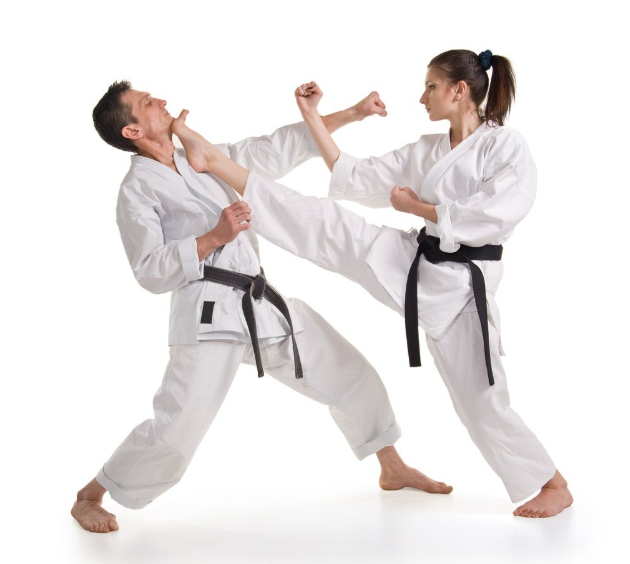Essential Techniques for Every Practitioner
Explore the essential Taekwondo kicks, from basic techniques to advanced moves. Learn how to choose the right kicks for your skill level, goals, and training, and improve your performance in martial arts.
1/9/20255 min read


Taekwondo is a dynamic martial art known for its emphasis on high, fast kicks and powerful strikes. Whether you're a beginner or a seasoned practitioner, choosing the right Taekwondo kicks for your training is crucial for improving your technique, enhancing your performance, and staying injury-free. In this guide, we will walk you through the different types of Taekwondo kicks, factors to consider, and tips on how to choose the best ones for your needs.
Understanding the Importance of Kicks in Taekwondo
Taekwondo, which means "the way of the foot and fist," revolves around the efficient use of both kicks and punches. Kicks are an essential aspect of this martial art and are often the primary method for scoring points in competitions. They also serve as a self-defense tool, helping practitioners maintain distance from opponents while delivering powerful attacks. To excel in Taekwondo, understanding the mechanics of different kicks and how they align with your personal goals is fundamental.
Key Types of Taekwondo Kicks
Before choosing which kicks to focus on, it's important to familiarize yourself with the most common types of Taekwondo kicks:
1. Front Kick (Ap Chagi)
The front kick is one of the most basic and widely used kicks in Taekwondo. It involves thrusting the foot forward, typically targeting the opponent’s midsection or head. This kick is versatile, quick, and effective for both offensive and defensive moves. It is a fundamental kick that helps build balance and strength.
When to use it:
As a quick striking technique in close range.
To maintain distance between you and your opponent.
2. Roundhouse Kick (Dollyo Chagi)
The roundhouse kick is another popular kick in Taekwondo, and it involves rotating the body to deliver a circular kick. The target can range from the opponent’s head to their midsection, making it a powerful and versatile kick. The roundhouse kick is often used to set up more advanced techniques or combinations.
When to use it:
To target the opponent’s head or torso.
In combination with other techniques.
3. Side Kick (Yop Chagi)
The side kick is a powerful kick that involves extending the leg to the side and striking with the heel. It is an effective way to create space between you and your opponent, making it a popular choice in self-defense situations. The side kick requires good balance and flexibility to execute properly.
When to use it:
To create space and push an opponent away.
As a counterattack when your opponent is in close range.
4. Back Kick (Dwi Chagi)
The back kick is delivered by turning your back to the opponent, rotating your body, and kicking backward. This kick is particularly useful when an opponent is behind you or trying to close the distance. The back kick is strong and can deliver significant force, making it an excellent technique for self-defense.
When to use it:
To surprise opponents who try to close the distance quickly.
As a defensive counter to a forward-moving opponent.
5. Hook Kick (Huryeo Chagi)
The hook kick is a less common but highly effective kick in Taekwondo. It involves kicking in a hooking motion to strike the opponent’s head or upper body. This kick requires precision and flexibility, making it a technique that’s often used by more advanced practitioners.
When to use it:
To catch an opponent off guard with an unexpected angle.
To target the head when an opponent is unaware.
Factors to Consider When Choosing Taekwondo Kicks
Choosing the right Taekwondo kicks for your style and abilities requires careful consideration. Here are some factors to keep in mind:
1. Your Skill Level
Your current skill level will influence which kicks you should focus on. Beginners may start with basic kicks like the front kick or roundhouse kick, while more advanced practitioners can work on high-level techniques like the hook kick or spinning back kick. Don’t rush to master all kicks at once. Focus on mastering the fundamentals before moving on to advanced moves.
2. Your Physical Abilities
Taekwondo kicks demand flexibility, strength, and balance. Assess your physical capabilities and choose kicks that align with your body’s strengths. For example, if you have excellent flexibility, you might excel at high kicks like the head-level roundhouse kick. If balance is a challenge, it’s better to start with simpler kicks like the front kick or side kick.
3. Purpose and Application
Consider the purpose for which you are training. Are you practicing for competition, self-defense, or fitness? Each kick serves a different purpose:
Competition: Speed and precision matter. Focus on kicks like the front kick, roundhouse kick, and spinning kicks for fast, high-scoring techniques.
Self-defense: Stronger, more practical kicks like the side kick or back kick are ideal for creating space and neutralizing threats.
Fitness: If your goal is to improve flexibility and overall fitness, you might want to practice a combination of different kicks.
4. Your Instructor’s Recommendations
Your Taekwondo instructor can offer valuable insights on which kicks are most beneficial for your development. They can assess your technique, physical condition, and goals, helping you to choose the best kicks for your progression. Regular feedback from a qualified instructor is essential for refining your skills.
5. Flexibility and Power
Some kicks require greater flexibility, while others demand more power. As you progress in Taekwondo, it’s important to work on both flexibility and strength. For example, high kicks like the head-level roundhouse kick require excellent flexibility, while back kicks and side kicks rely on power and speed.
Tips for Mastering Taekwondo Kicks
Mastering Taekwondo kicks takes time, patience, and consistent practice. Here are some tips to help you improve your kicking technique:
1. Practice Regularly
Kicking is a skill that improves with practice. Set aside time to practice kicks daily, even if it's just for 15-20 minutes. Focus on technique and form before attempting high or fast kicks.
2. Improve Flexibility
Flexibility is a crucial element of many Taekwondo kicks. Incorporate stretching routines into your training regimen to improve your range of motion and reduce the risk of injury.
3. Focus on Foot Placement and Balance
Proper foot placement is vital for executing kicks accurately and safely. Practice balancing on one leg and developing your core strength to enhance stability when performing kicks.
4. Work on Speed and Timing
In Taekwondo, speed and timing are often more important than power. Practice delivering kicks quickly while maintaining control over your movements.
5. Condition Your Legs
Kicking requires strong leg muscles. To enhance your kicking power, incorporate strength training exercises like squats and lunges into your fitness routine.
6."An eye-catching Taekwondo kick that captures strength, speed, and flawless technique."
Conclusion
Choosing the right Taekwondo kicks for your training requires understanding your goals, physical abilities, and level of expertise. Focus on mastering the fundamental kicks before progressing to more complex techniques. Whether you're aiming for self-defense, competition, or fitness, each kick has its specific purpose. With regular practice and guidance from your instructor, you can improve your kicking ability and become a more proficient Taekwondo practitioner.
By following the tips outlined in this guide, you'll be well on your way to selecting and mastering the best kicks for your Taekwondo journey. Stay dedicated, practice consistently, and you'll soon see improvement in both your technique and performance.


Quality
Manufacturing top-notch combat sports equipment for businesses worldwide.
Menu
Accessible
© 2024. All rights reserved.


